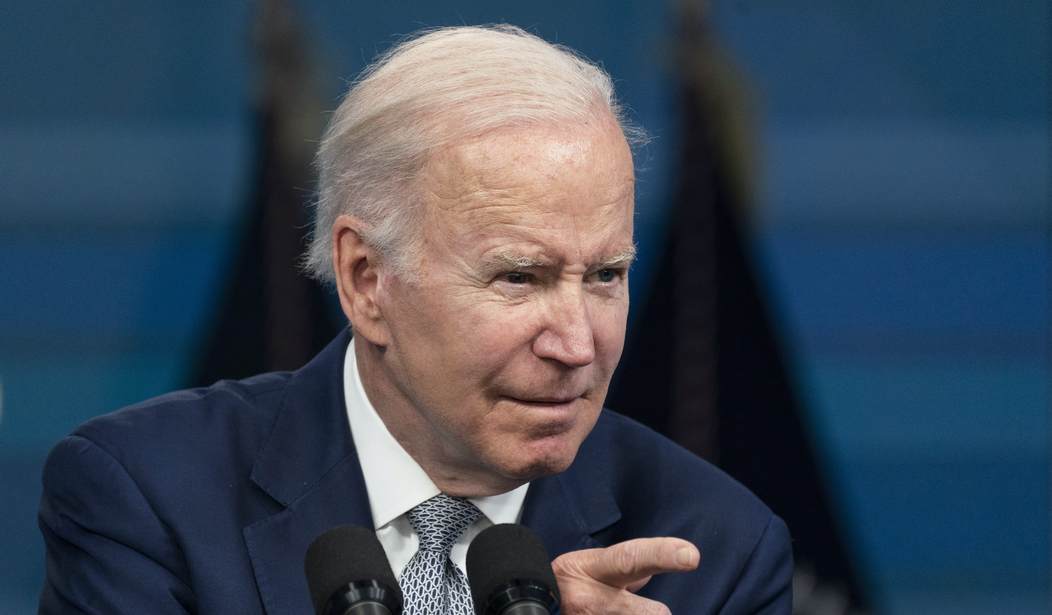The New York Times got out ahead of this morning’s jobs report with a warning that we should expect job growth to slow down in July, thanks to Federal Reserve action to tamp down inflation.
Oops:
Total nonfarm payroll employment rose by 528,000 in July, and the unemployment rate edged down to 3.5 percent, the U.S. Bureau of Labor Statistics reported today. Job growth was widespread, led by gains in leisure and hospitality, professional and business services, and health care. Both total nonfarm employment and the unemployment rate have returned to their February 2020 pre-pandemic levels. …
In July, the unemployment rate edged down to 3.5 percent, and the number of unemployed persons edged down to 5.7 million. These measures have returned to their levels in February 2020, prior to the coronavirus (COVID-19) pandemic.
The labor force participation rate, at 62.1 percent, and the employment-population ratio, at 60.0 percent, were little changed over the month. Both measures remain below their February 2020 values (63.4 percent and 61.2 percent, respectively). (See table A-1.)
We’ll get back to the February 2020 numbers in a moment. First, this may be the one sour note in the data:
The number of persons employed part time for economic reasons increased by 303,000 to 3.9 million in July. This rise reflected an increase in the number of persons whose hours were cut due to slack work or business conditions. The number of persons employed part time for economic reasons is below its February 2020 level of 4.4 million. These individuals, who would have preferred full-time employment, were working part time because their hours had been reduced or they were unable to find full-time jobs. (See table A-8.)
We added 528,000 jobs but sent another 303,000 into part-time work for economic reasons? Yes, that’s still below the February 2020 level, but that’s a mighty big jump in parallel with the largest monthly jobs add in months.Worth noting, too: the labor force actually shrank by 239,000 while adding 528,000 jobs. That certainly seems curious.
Clearly something is going on in the job market to push in both directions. But what is it? Wage growth appeared to remain steady, while still well below the inflation rate:
In July, average hourly earnings for all employees on private nonfarm payrolls rose by 15 cents, or 0.5 percent, to $32.27. Over the past 12 months, average hourly earnings have increased by 5.2 percent. In July, average hourly earnings of private-sector production and nonsupervisory employees rose by 11 cents, or 0.4 percent, to $27.57. (See tables B-3 and B-8.)
In July, the average workweek for all employees on private nonfarm payrolls was 34.6 hours for the fifth month in a row. In manufacturing, the average workweek for all employees held at 40.4 hours, and overtime increased by 0.1 hour to 3.3 hours. The average workweek for production and nonsupervisory employees on private nonfarm payrolls remained unchanged at 34.0 hours. (See tables B-2 and B-7.)
Wages grew at a year-on-year 5.2% rate in a 9.3% inflationary environment. That’s still a significant wage erosion, and it’s not getting better. The best news we can make of this is that we haven’t yet seen a wage-price spiral, but at this level of employment, it won’t be far behind. In fact, this level of job creation and expansion should have goosed wages up higher and arguably much higher than the previous trend, but didn’t. Hmmm.
We can expect Joe Biden and the White House to use this figure to argue that the US has not entered a recession. However, as NBC’s Benjy Sarlin points out, that argument has a sharp edge too:
We’re still in that good news is bad news zone where obviously it seems absurd to treat an economy adding 500k jobs a month as in recession, but also the scale of that growth might prompt the Fed to actually cause a recession ASAP
— Benjy Sarlin (@BenjySarlin) August 5, 2022
Exactly. This gives the Fed a lot more room to get aggressive on rate hikes over the next couple of months, especially if next week’s CPI and PPI reports show inflation still skyrocketing. It seems almost impossible that inflation would have tempered in a month with this much job expansion, too, which means the Fed will feel the need to act more urgently. That will eventually cause the job-creation market to seize up as well.
But it is not this day, clearly.
What about the pandemic recovery claim? Well, sorta. With this report and the revisions to the last two months (net +28,000), official non-farm employment in the US has reached 152.536 million. That’s finally above the pre-pandemic level of 152.504 million of February 2020. However, the US population has not remained static in that period. As I noted last month, we added nearly 4 million people to the population in 2020 and 2021, let alone what we’ve added this year. At an employment-population ratio of 59%, we would need to add about 2.4 million more new jobs to fully and dynamically recover from the pandemic crash. We should be at somewhere closer to 155 million non-farm jobs, in other words, so we are still recovering jobs — this time from the lost job creation of the last 30 months.
Still, this level of job creation is as good as it is surprising. The caveats remain worth watching, though, and those may show that we’ve hit the high-water mark before the Fed’s interventions really start to bite.









Join the conversation as a VIP Member